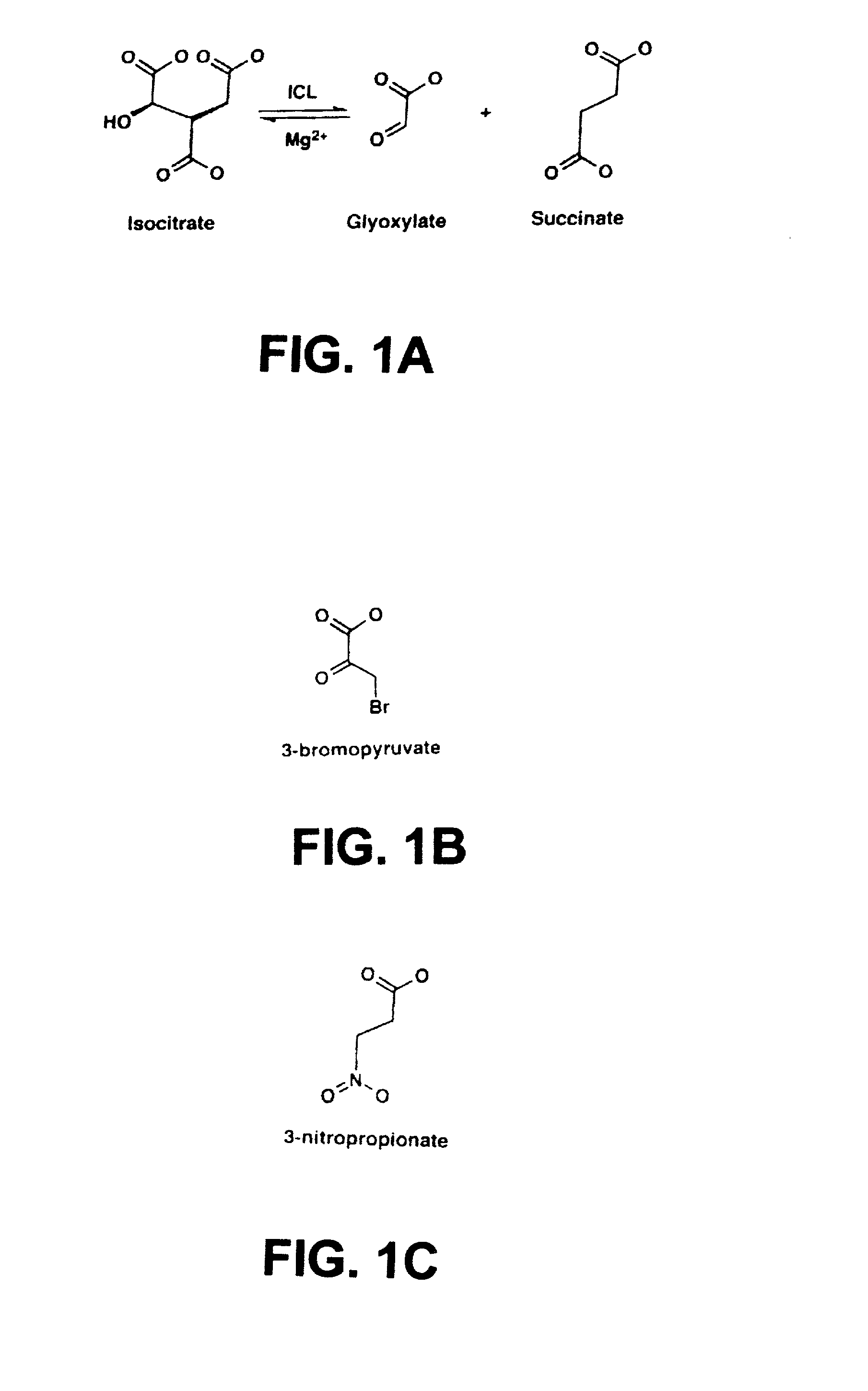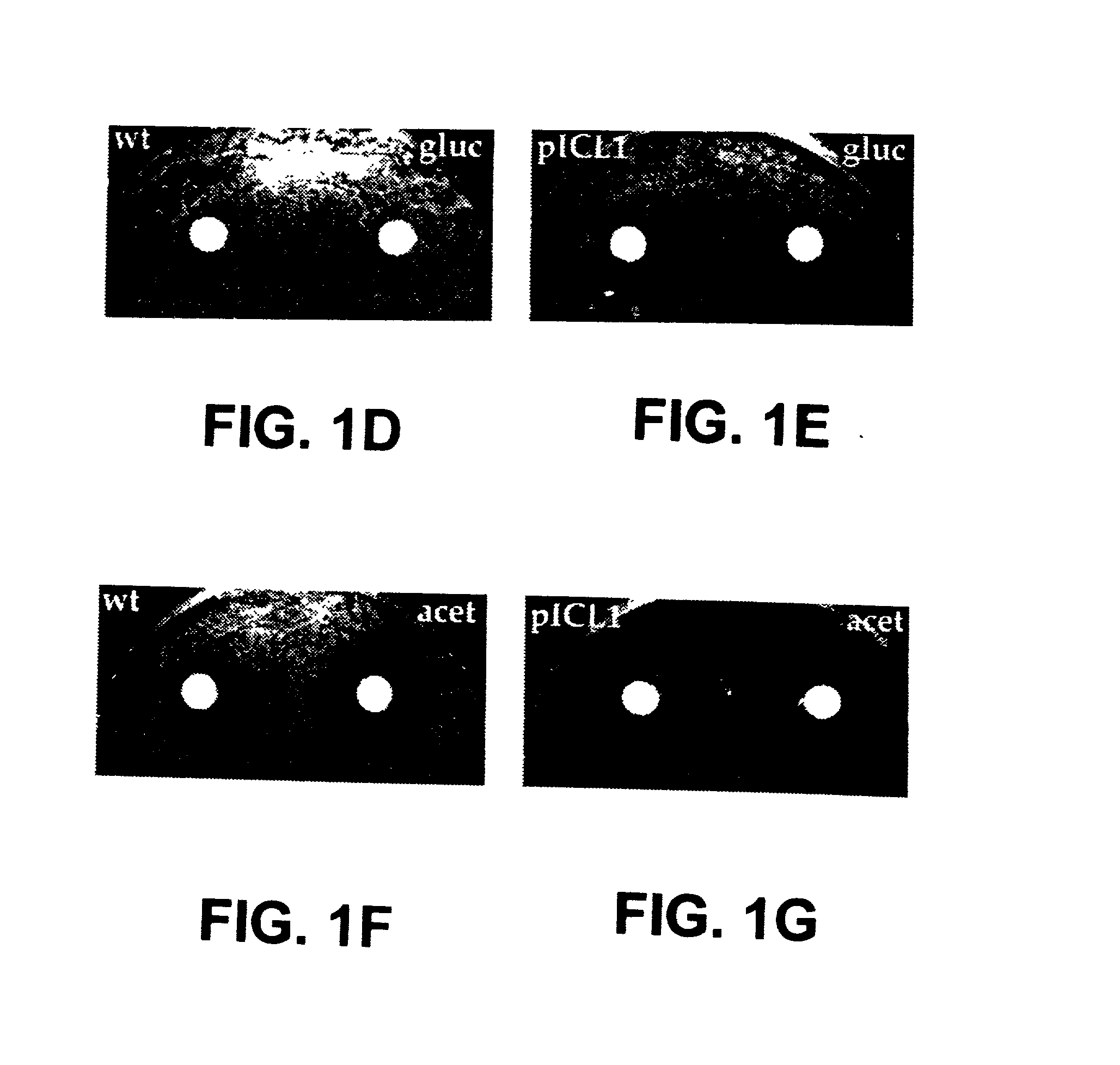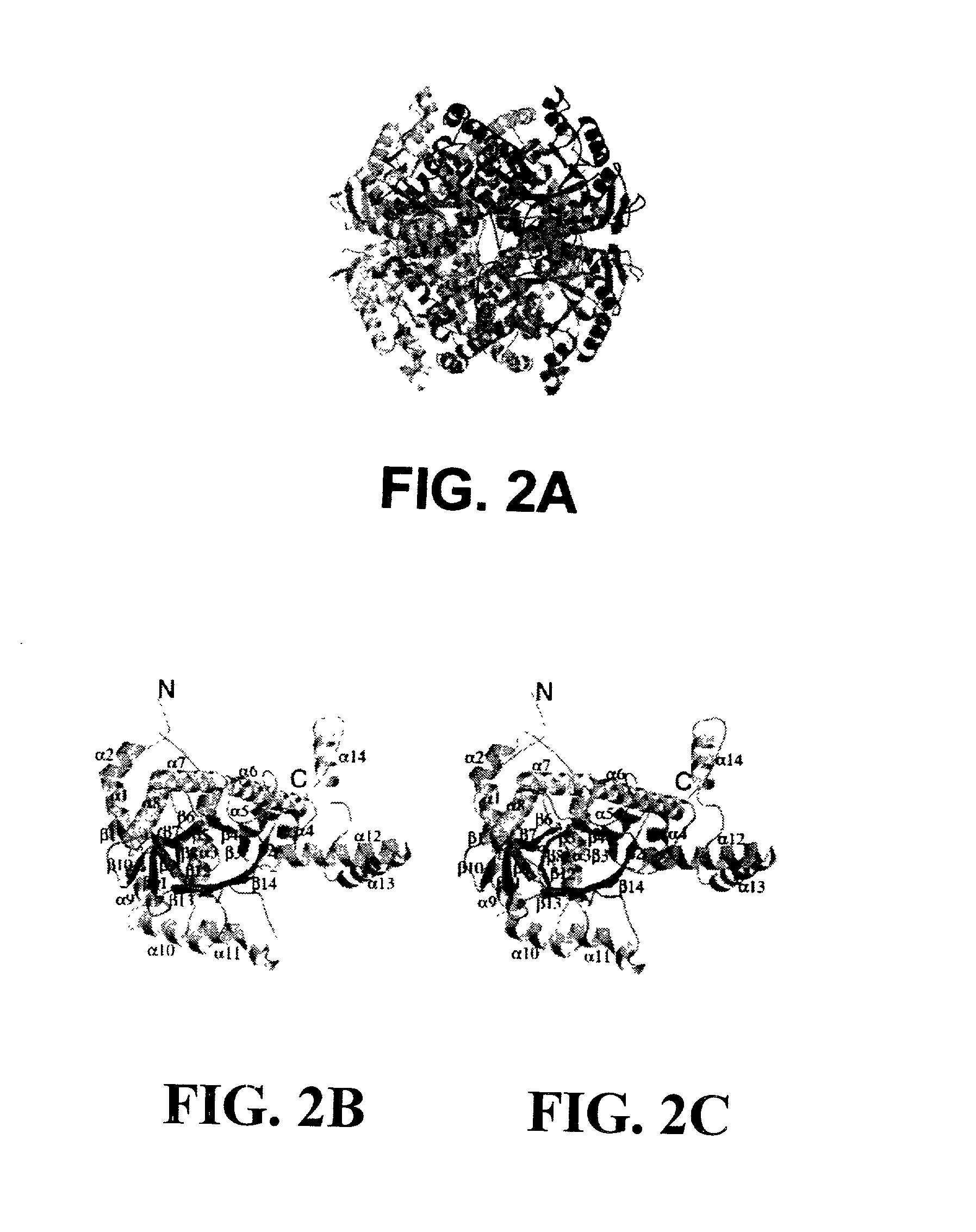Structure of isocitrate lyase enzyme from mycobacterium tuberculosis and inhibitory agents to combat persistent infection
a technology of isocitrate lyase and mycobacterium tuberculosis, which is applied in the field of structure of isocitrate lyase enzyme from mycobacterium tuberculosis and inhibitory agents to combat persistent infection, can solve the problems of many deaths in developing countries, inability to effectively target drugs in such processes, and inability to identify compounds. to achieve the effect of facilitating the identification of compounds
- Summary
- Abstract
- Description
- Claims
- Application Information
AI Technical Summary
Benefits of technology
Problems solved by technology
Method used
Image
Examples
example 1
Initial Characterization of Isocitrate Lyase in Mycobacteria
[0200] The key enzymes of the glyoxylate shunt are isocitrate lyase and malate synthase. The former cleaves isocitrate to succinate and glyoxylate, and the latter condenses glyoxylate with acetyl coenzyme A (acetyl-CoA) to yield malate. The glyoxylate shunt circumvents the loss of two carbon dioxides of the tricarboxylic acid cycle (TCA cycle), thereby permitting net incorporation of carbon into cellular structures during growth on acetate. In addition, even during operation of the TCA cycle, many fatty acids are partially metabolized to acetyl-CoA, thus requiring the presence of isocitrate lyase.
[0201] Isocitrate lyase competes with the TCA cycle enzyme isocitrate dehydrogenase for their common substrate isocitrate. By changing the total cellular activity of either of the two enzymes and / or by changing their affinities toward isocitrate, control of carbon flux between the two cycles is achieved. In E. coli, growth on aceta...
example 2
Persistent Infection of M. tuberculosis Requires the Glyoxylate Shunt
A. Methods
[0222] 1. Mycobacterial Strains and Growth Conditions. M. tuberculosis (Erdman and CSU93) were passaged once through mice and stored in aliquots at -80.degree. C. M. smegmatis mc.sup.2155 was colony-purified and stored in aliquots at -80.degree. C. Mycobacteria were grown in 7H9 broth or 7H10 agar, supplemented with 10% OADC, 0.5% glycerol, 100 .mu.g ml.sup.-1 cycloheximide, and 0.1% Tween-80. Antibiotics were hygromycin at 50 .mu.g ml.sup.-1 or kanamycin at 25 .mu.g m.sup.-1. Defined carbon medium was M9 agar (DifCo) supplemented with glucose, sodium acetate, or methyl palmitate at 0.1%.
[0223] 2. Isolation and Complementation of an icl Mutant of M. smegmatis. M. smegmatis mc.sup.2155 was mutagenized with 2.5% ethyl methane sulfonate (Sigma) in 0.1 M phosphate buffer (pH 7) for 90 min, washed, recovered in 7H9 broth for 6 hr at 37.degree. C., and plated for colonies on 7H10 agar. Two icl mutants were iden...
example 3
Structure of Isocitrate Lyase from M. Tuberculosis
A. Methods
[0241] 1. Inhibition Studies. Growth of the wild type M. smegmatis mc.sup.2155 or ICL mutant (.DELTA.icl) strain complemented with a plasmid containing ICL (pICL1) was monitored in M9 medium with glucose or acetate as the carbon source and in the presence of drug discs soaked in varying concentrations (30 mM or 60 mM) of the ICL inhibitors.
[0242] 2. Cloning and Purification. The open reading frame for ICL was amplified from the genomic DNA using polymerase chain reaction. The construct was made by cloning the NdeI-HindIII fragment in to pET30(b) and expressed in E. coli using a T7 polymerase based system. The enzyme was purified by anion exchange chromatography followed by gel filtration using a buffer containing 50 mM Tris-HCl (pH 8.0), 100 mM NaCl, 1 mM DTT and 0.1 mM EDTA. The C191S mutant was generated by PCR.TM. mutagenesis and purified similarly. Selenomethionylated ICL was produced by standard methods, as described i...
PUM
| Property | Measurement | Unit |
|---|---|---|
| Capacitance | aaaaa | aaaaa |
| Fraction | aaaaa | aaaaa |
| Fraction | aaaaa | aaaaa |
Abstract
Description
Claims
Application Information
 Login to View More
Login to View More - R&D
- Intellectual Property
- Life Sciences
- Materials
- Tech Scout
- Unparalleled Data Quality
- Higher Quality Content
- 60% Fewer Hallucinations
Browse by: Latest US Patents, China's latest patents, Technical Efficacy Thesaurus, Application Domain, Technology Topic, Popular Technical Reports.
© 2025 PatSnap. All rights reserved.Legal|Privacy policy|Modern Slavery Act Transparency Statement|Sitemap|About US| Contact US: help@patsnap.com



